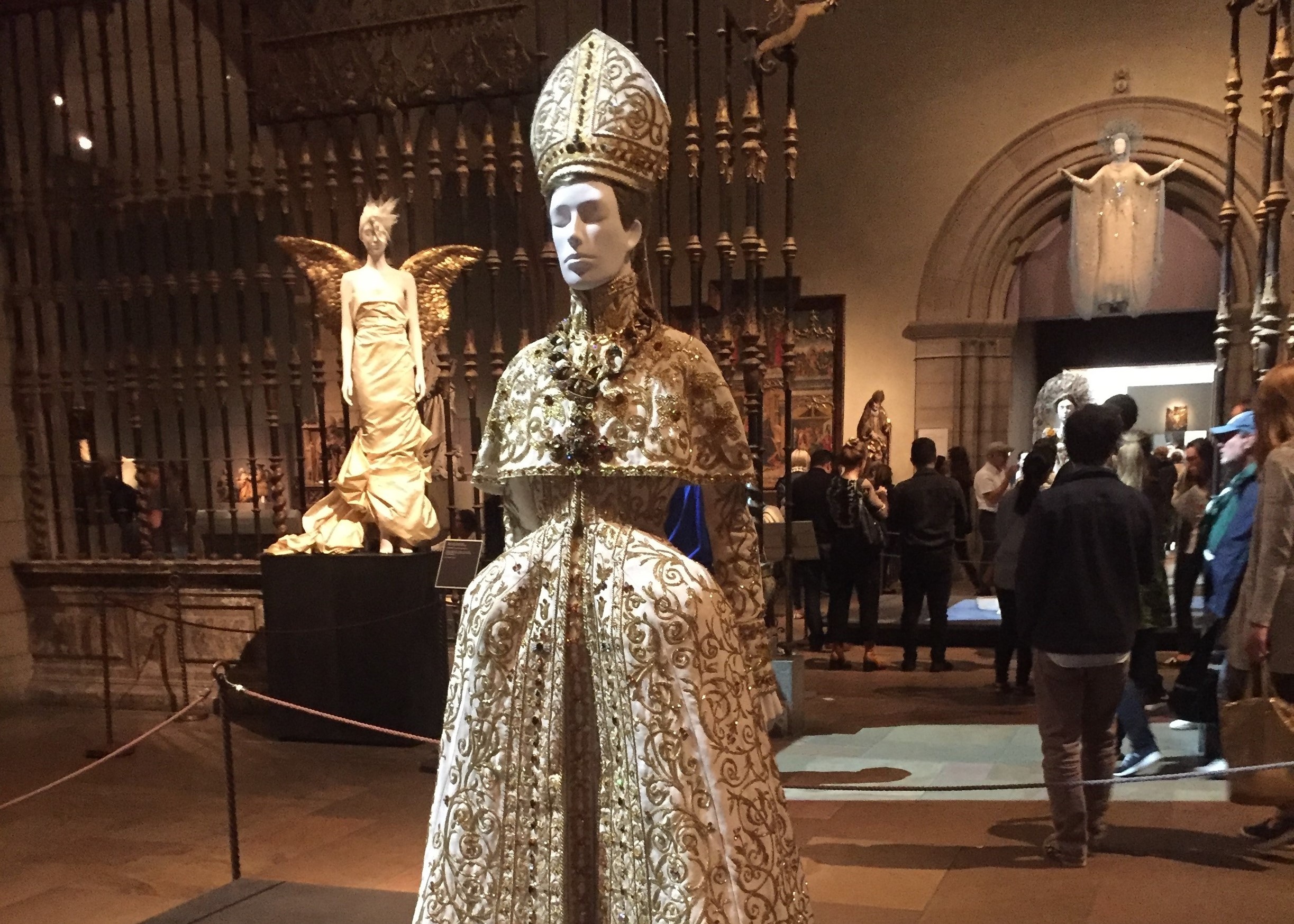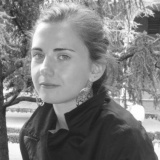
 Nicole Paronzini
Nicole Paronzini
Italian Lifestyle and Fashion: The MET does fashion with a heavenly bent
- WTI Magazine #105 Jul 21, 2018
-

 Nicole Paronzini
Nicole Paronzini
What do fashion and European Catholicism have in common? Many asked this question when the newest art exhibition at New York City’s Metropolitan Museum of Art’s Costume Institute, Heavenly Bodies: Fashion and the Catholic Imagination, opened in May 2018. As the old Italian saying goes, Gli opposti si attraggono, opposites attract. The seemingly opposite elements of fashion and religion work very well together at this blockbuster exhibition.
Heavenly Bodies is the Costume Institute’s biggest exhibition ever; it occupies two MET sites: the main building on Fifth Avenue and the uptown Cloisters location, encouraging, as many reviewers have suggested, a sort of “pilgrimage” between the two. Visitors entering the first floor (on the right) of the museum on Manhattan’s Upper East Side get the feeling of something mystical, of being in the presence of what the Wall Street Journal calls “the Sartorial Gods.” While walking around the rooms dedicated to Medieval art, you are welcomed by beautiful clothes by fashion designers from the 20th and 21st centuries.
Catholic imagination and its influence on modern fashion is both the common theme of the dresses on exhibit and the inspiration behind the whole exhibition. A 2005 Newsweek article pointed to Pope Benedict XVI’s sartorial inclinations, with his Prada loafers and Gucci shades, focusing the attention of mass media on the role that dress plays within the Catholic church. Thirteen years later, Andrew Bolton, Wendy Yu Curator in charge of the MET’s Costume Institute, gives life to one of his conceptually most ambitious shows. In an interview for US Vogue, Bolton affirms that “the intersection of faith and fashion, the sacred and profane, as it were, has not always been easy.” It is a complex and sometimes contested relationship, but, Bolton adds, “the interplay between the two has inspired some awe-inspiring sartorial innovation.” His intent with the Heavenly Bodies show was to explore to what extent Catholicism is a source of inspiration for many, believers or not.
Opening with a blockbuster ball
The exhibition opened with the annual MET ball, one of the biggest events in the fashion world, gathering together celebrities and fashion icons, under the attentive eye of US Vogue editor in chief, Anna Wintour, who has chaired the event since 1995. Celebrities and other A-listers captured the attention of the audience and experts with their outfits created by important Italian designers: for example, Katy Perry as a golden angel and Zendaya as a contemporary Giovanna D’Arco (both wearing Versace), Jered Leto, very fashionably Jesus-like, in Gucci, and Rihanna, in a stunning dress by Moschino (resembling a very sexy female pope). Italy, the headquarters of the Roman Catholic Church and the Pope, inevitably occupies the first place in the Catholic imaginary, with its rich religious tradition and fashion history.
The ball was the perfect introduction to the exhibition, with fashion and religion dialoguing with each other as two systems that use visual and metaphoric communication, transcending every-day reality, and creating a lead for a big community of worshippers. “European Catholicism and fashion enjoy a particularly close bond, especially in their mutual devotion to art and beauty,” writes Rhonda Garelick in her review of the show for thecut.com; we could not agree more.
Touring Heavenly Bodies at the MET
Surrounded by precious pieces of religious art from the European Middle Age, you will undoubtedly be surprised and bewitched by the power of high fashion mirroring religion and vice versa. Many of the designers presented are from Italy, from Donatella Versace, who is also a co-sponsor of the event, to Dolce and Gabbana: this means that they grew up feeling the presence of the Catholic church in their family traditions and personal life, although some of them may have grown apart from it. Being Italian means having to deal, willingly or not, with Christianity.
Among the incredible designer pieces on exhibit, Gianni and Donatella Versace’s stand out, such as their motorcycle leather jackets with colorful jeweled crucifixes and modern dresses enriched with sumptuous pearls, gold and silver elements. Not only Italian designers are featured: included are beautiful clothes from past collections by the French Coco Chanel, raised by nuns, as well as pieces by Moschino, John Galliano, and Balenciaga. On display throughout is the meticulous work of tailors and seamstresses who have executed the creative directions of the designers flawlessly, resulting in beautiful dresses embellished with detailed decorations.
In the main space, ancient pieces of religious art mirror the sartorial masterpieces of the most famous designers worldwide: modern, nun-like mannequins from the House of Moschino on one side face the angelic creatures decorated with exquisite details by Valentino, Dior and Viktor & Rolf. In further corners, we see ethereal but majestic brides and golden Madonnas imagined by Christian Lacroix, Dolce and Gabbana and John Galliano.
You have time until October 2018 to experience the mysterious fascination of this unexpected and yet so well put together exhibition -- to witness the powerful communication between sacred and profane, and reflect on your personal credo. As the New York Post wisely put it: "Art lovers already know the Metropolitan Museum is heaven on Earth. But its new exhibit . . . should convert everyone else."